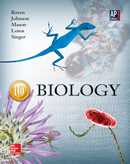1 A) characterizes two mostly marine animals, Bryozoa and Brachiopoda B) a circular or U-shaped ridge around the mouth C) used in gas exchange D) ciliated tentacles E) All choices are attributes that belong to lophophores. 2 A) true B) false 3 A) rigid exoskeleton B) prosoma C) tagmata D) tagmatization E) compound eyes 4 A) internal and extracellular B) extracellular only C) food particles engulfed by phagocytosis D) gut dedicated to digestion E) tapeworms without a mouth 5 A) copulation B) fertilized eggs hatched in cocoons C) hermaphroditic D) external fertilization only E) male and female sex organs 6 A) eutrophy B) eutely C) homosis D) constancy E) numeracy 7 A) true B) false 8 A) nematodes B) mollusks C) flatworms D) chordates E) echinoderms 9 A) Chordata B) Molusca C) Bryozoa D) Rotifera E) Cycliophora 10 A) The foot of snails and slugs are adapted for digging, allowing them to live on land. B) The foot of snails and clams are adapted for digging allowing them to live on land C) The foot of snails and slugs are flat not allowing them to live on land. D) The foot of bivalves, clams and mussels, are flat, allowing them to live on land. E) The foot of bivalves, clams and mussels are adapted for digging, not allowing them to live on land. 11 A) chitons B) gastropods C) benthic mollusks D) snails E) All choices are correct. 12 A) true B) false 13 A) a redia B) a cercaria C) a sporocyst D) a schistosome E) No choice is correct. 14 A) a brain B) longitudinal nerve chords with cross-connections C) a central nerve chord D) a nerve chord shaped in a ring E) lacking cephalization 15 A) secretes a chitinous tube B) only about 10 species are known C) over 10,000 species are known D) up to 40 cm in length E) has a lophophore 16 A) hookworm B) anemia C) trichinosis D) pinworms E) All choices are diseases in humans caused by nematodes. 17 A) 10:1 B) 200:1 C) 200,000:1 D) 200,000,000:1 E) 1,000,000, 18 A) true B) false 19 A) flies B) arachnids C) bees D) beetles E) crustaceans 20 A) Insects cannot eat, move or copulate without a brain. B) The brain acts as a stimulator for various actions. C) The brain acts as an inhibitor for various actions. D) The brain is necessary for copulating but not for moving or eating. E) The brain is necessary for eating and copulating but not for moving. 21 A) They are composed of up to ten individual lenses, retinas and optic nerves. B) Simple eyes are not found in arthropods. C) An independent visual unit consists of a lens, eight retinular cells, and a light sensitive core; each unit shares an optic nerve with all other units. D) They are composed of one retinular cell connected to one light sensitive core, and they share a lens and optic nerve with all other units. E) No choice is a correct comment.





